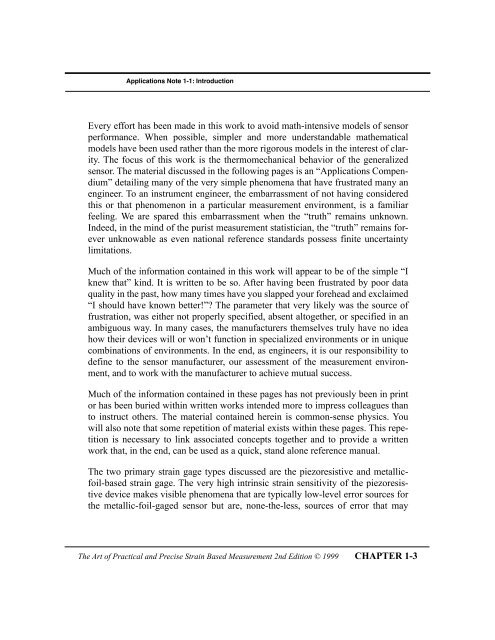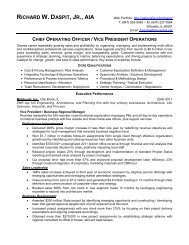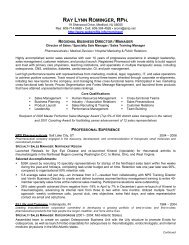The Art of Practical and Precise Strain Based ... - Webprofile.info
The Art of Practical and Precise Strain Based ... - Webprofile.info
The Art of Practical and Precise Strain Based ... - Webprofile.info
- No tags were found...
Create successful ePaper yourself
Turn your PDF publications into a flip-book with our unique Google optimized e-Paper software.
Applications Note 1-1: IntroductionEvery effort has been made in this work to avoid math-intensive models <strong>of</strong> sensorperformance. When possible, simpler <strong>and</strong> more underst<strong>and</strong>able mathematicalmodels have been used rather than the more rigorous models in the interest <strong>of</strong> clarity.<strong>The</strong> focus <strong>of</strong> this work is the thermomechanical behavior <strong>of</strong> the generalizedsensor. <strong>The</strong> material discussed in the following pages is an ÒApplications CompendiumÓdetailing many <strong>of</strong> the very simple phenomena that have frustrated many anengineer. To an instrument engineer, the embarrassment <strong>of</strong> not having consideredthis or that phenomenon in a particular measurement environment, is a familiarfeeling. We are spared this embarrassment when the ÒtruthÓ remains unknown.Indeed, in the mind <strong>of</strong> the purist measurement statistician, the ÒtruthÓ remains foreverunknowable as even national reference st<strong>and</strong>ards possess finite uncertaintylimitations.Much <strong>of</strong> the <strong>info</strong>rmation contained in this work will appear to be <strong>of</strong> the simple ÒIknew thatÓ kind. It is written to be so. After having been frustrated by poor dataquality in the past, how many times have you slapped your forehead <strong>and</strong> exclaimedÒI should have known better!Ó? <strong>The</strong> parameter that very likely was the source <strong>of</strong>frustration, was either not properly specified, absent altogether, or specified in anambiguous way. In many cases, the manufacturers themselves truly have no ideahow their devices will or wonÕt function in specialized environments or in uniquecombinations <strong>of</strong> environments. In the end, as engineers, it is our responsibility todefine to the sensor manufacturer, our assessment <strong>of</strong> the measurement environment,<strong>and</strong> to work with the manufacturer to achieve mutual success.Much <strong>of</strong> the <strong>info</strong>rmation contained in these pages has not previously been in printor has been buried within written works intended more to impress colleagues thanto instruct others. <strong>The</strong> material contained herein is common-sense physics. Youwill also note that some repetition <strong>of</strong> material exists within these pages. This repetitionis necessary to link associated concepts together <strong>and</strong> to provide a writtenwork that, in the end, can be used as a quick, st<strong>and</strong> alone reference manual.<strong>The</strong> two primary strain gage types discussed are the piezoresistive <strong>and</strong> metallicfoil-basedstrain gage. <strong>The</strong> very high intrinsic strain sensitivity <strong>of</strong> the piezoresistivedevice makes visible phenomena that are typically low-level error sources forthe metallic-foil-gaged sensor but are, none-the-less, sources <strong>of</strong> error that may<strong>The</strong> <strong>Art</strong> <strong>of</strong> <strong>Practical</strong> <strong>and</strong> <strong>Precise</strong> <strong>Strain</strong> <strong>Based</strong> Measurement 2nd Edition © 1999 CHAPTER 1-3
















